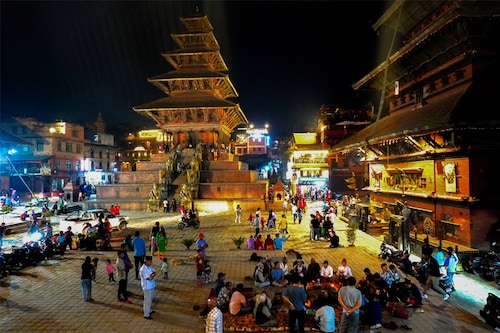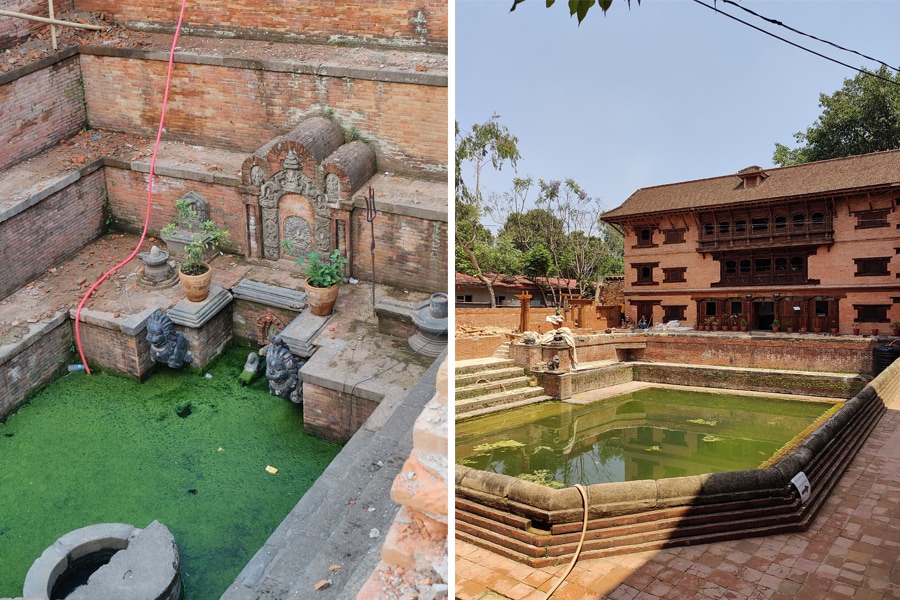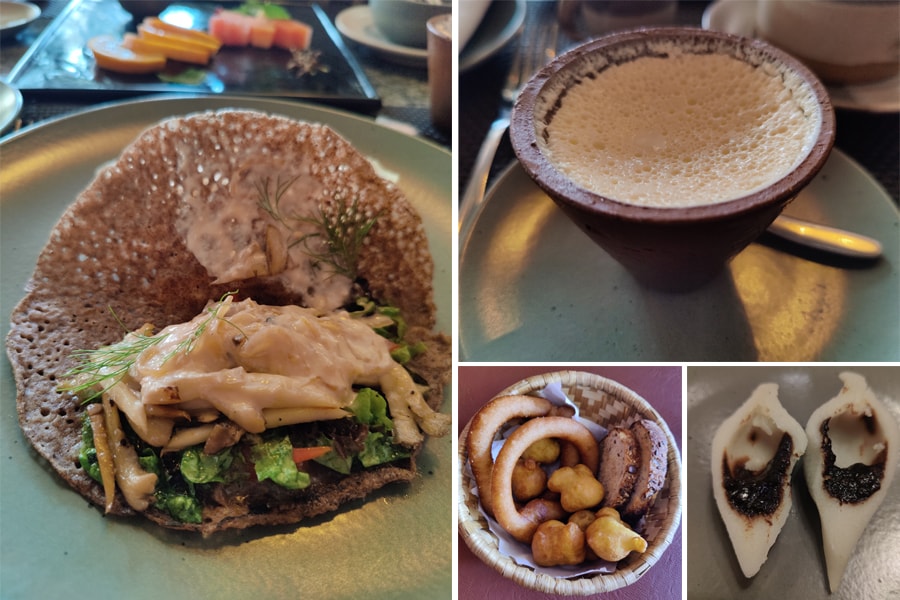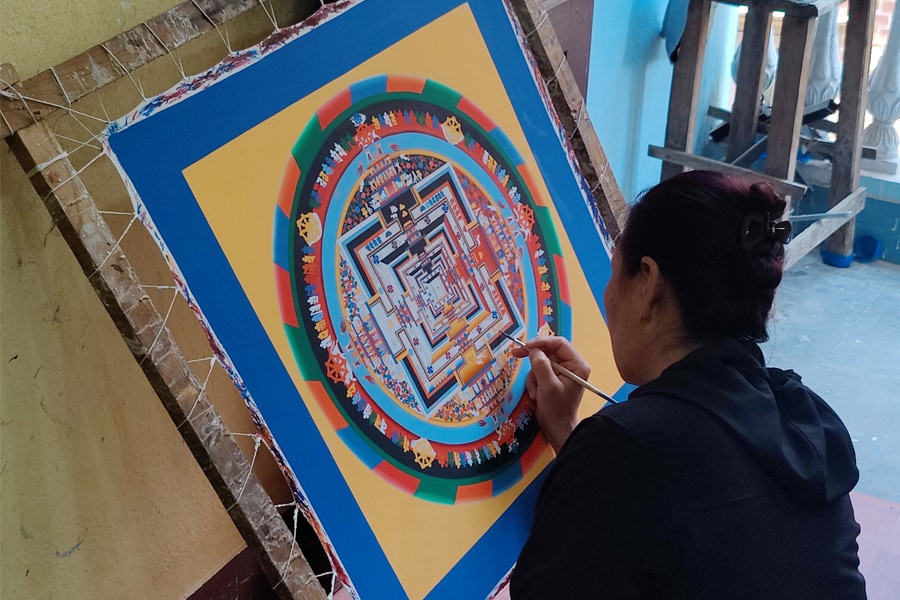Bhaktapur: Where art, architecture and devotion meet
With its traditional Newari architecture, temples and rich history, Nepal's cultural capital, 15 km from Kathmandu, is well worth a visit


As I stroll through the narrow lanes and alleys lined by the traditional Newari architecture of red-brick houses with doors and windows framed by intricate wood carvings, I realise why Bhaktapur, located about 15km east of Kathmandu in Nepal, is known as a treasure trove of Nepal’s finest architecture and art. The town, whose name means ‘city of devotion’, is also often called Nepal’s living heritage. With its maze of narrow pedestrian streets, courtyards, temples and architectural marvels, Bhaktapur has been recognised as a UNESCO World Heritage Site since 1979.
Bhaktapur was founded in the 12th century by King Ananda Malla and was the capital of Kathmandu Valley until the second half of the 15th century, when King Yaksha Malla decided to break the kingdom into three, gifting one to each of his sons. Today, history whispers from every corner of the town.
One of the first squares we explore is the majestic Durbar Square, lined with temples and museums. “Were there nothing else in Nepal, save the Durbar Square of Bhaktapur, it would still be amply worth making a journey halfway round the globe to see," said writer EA Powell in 1929. My guide, Rita Suwal, tells me that by virtue of being on the trade route between India and Tibet, the traders here prospered and made a lot of money and showcased their wealth in fabulous temples, buildings and squares. “The windows were an indicator of wealth and status—the more elaborate and carved they were the wealthier the person was," explains Rita.
The square is also the site of many important festivals and ceremonies, including the famous Bisket Jatra festival, held annually in April. The kings who travelled to India in the 15th century made the char dham temples here to facilitate the common people who could not make the pilgrimage to India—including the Badrinath temple in the shikhara style and the Radhakrishna temple in the pagoda style.
 Clockwise The Durbar square in Bhaktapur. the golden gate set into a red gatehouse, constructed by the last Malla king King Ranjit Malla, with intricate carvings, symbols and inscriptions depicting Hindu mythology and legends. leads to the Taleju temple in Bhaktapur. The iconic Nyatapola Pagoda temple in Taumadhi Square. Image: Kalpana Sunder
Clockwise The Durbar square in Bhaktapur. the golden gate set into a red gatehouse, constructed by the last Malla king King Ranjit Malla, with intricate carvings, symbols and inscriptions depicting Hindu mythology and legends. leads to the Taleju temple in Bhaktapur. The iconic Nyatapola Pagoda temple in Taumadhi Square. Image: Kalpana Sunder
The showstopper here is the golden gate set into a red gatehouse, constructed by the last Malla king King Ranjit Malla, with intricate carvings, symbols and inscriptions depicting Hindu mythology and legends. Inside the palace is the Taleju temple, which dates to 1553. This is considered to be one of the holiest temples in Bhaktapur, and only Hindus may enter it. Legend has it that the goddess Taleju used to appear in the dreams of the Malla kings and advise them about running their kingdom.
The city, locals tell me, is protected by eight mother goddesses with open shrines dedicated to each of them. I see that religion and age-old traditions play a vital role in the life here. Women dressed in sarees and men in traditional hats carry marigolds and offerings to temples and shrines every morning, perform pujas and take part in religious processions. Newari culture also has a lot of esoteric and tantric practices that shape religious rituals and art and architecture like mantras and mystic drawings like mandalas and chakras.
All over the town you also find ancient waterspouts in sunken fountains, with mythical creatures and deities carved in stone, called hiti, where travellers drank spring water and people also washed clothes and socialised. Ancient royal canals brought water through filtration for people to use for their daily needs. Though today many are in disuse and disrepair, a few are still used by the locals.
 Hiti or Dhunge Dhara are ancient stone drinking fountains found all over Bhaktapur. Image: Kalpana Sunder
Hiti or Dhunge Dhara are ancient stone drinking fountains found all over Bhaktapur. Image: Kalpana Sunder
Next to the Taleju temple is the awe-inspiring 55-window palace, with carved wooden windows, each embellished with an ornate design. Ahead looms the statue of King Bhupatindra Malla facing toward the Taleju temple with his arms folded as a devotee rather than a king.
Wood carving is an integral part of Newari culture, used in temples, shrines and houses. Master craftsman Indra Kaji Shilpakar, who learned to carve at the age of 12, lives in a charming courtyard home where he has also built a replica home showcasing his work that won him an international conservation award. I take a tour of his house museum filled with his intricate wood carvings and the tools used by his ancestors. He has been involved in a lot of community efforts and rebuilding after the devastating earthquake of 2015.
The boutique hotel I am staying in, "The Nanee", in a narrow lane not too far from Durbar Square, is also built in the courtyard style of old Newari houses, with hundred-year-old houses with carved wooden windows in its backyard. In the courtyard behind the hotel, grains and chillies are laid out to dry, and a huge mural that represents the five elements called tatwa, enlivens a brick wall. “Our family belongs to this town and we wanted to give back something in our own way to the community, so we started this boutique hotel so that guests can come and experience our rich Newari culture and cuisine. What we are trying to do is give them is an experiential and immersive stay, be it meeting a master craftsman or visiting a Buddhist temple to see monks chanting," says Aditya Piya, the host at "The Nanee".
 Clockwise, Rice crepes with fillings Juju Dhau, the sweet buffalo curds that the town is famous for. Yomari rice dumplings. Breads like sel roti are served at breakfast. Image: Kalpana Sunder
Clockwise, Rice crepes with fillings Juju Dhau, the sweet buffalo curds that the town is famous for. Yomari rice dumplings. Breads like sel roti are served at breakfast. Image: Kalpana Sunder
We discover the Newari culinary heritage with food like badas (pancake-like dish made of lentil paste and topped with either egg or meat) and the delectable and creamy special curds set with buffalo milk, sugar and cardamom. At The Nanee, the chef serves us a nine-course dinner of Newari food with a twist. From Samay Baji—a dish of many small bites like beaten rice, beans and vegetables to Bara Wo—a lentil pancake served with ricotta cheese, to a tangy potato salad, this is a delicious experience. We also feast on Newari breakfasts of rice and buckwheat crepes and breads like Sel roti. I love Yomari—steamed dumplings of rice flour dough filled with sweet fillings like molasses, sesame, or coconut.
In Photos: UNESCO"s list of the intangible cultural heritage of humanity for 2023
My favourite square in town is the Taumadhi Square with the towering five-storeyed Nyatapola temple with 100 carved wooden struts and sloping roofs—Nepal’s tallest pagoda dedicated to Goddess Siddhi Lakshmi. Protected by stone statues of lions, elephants and goddesses, it was built in 1702. My guide, Suwal, tells me that this temple has never been destroyed by any earthquake. Climbing the steep stairs to the top I am rewarded with a stunning view of the city and the surrounding mountains. I love the vibe of the square at night, when locals gather here and sing devotional songs and play musical instruments, and people throng the lively cafes around the square where I linger over a coffee, people-watching from the window.
An early morning stroll with my guide takes me to a small cottage industry that makes beaten rice which is a large part of the diet of the locals and also used as offerings in religious ceremonies. I watch the process from soaking the paddy for three days to roasting it, de-husking it and finally pounding it down to beaten rice which is packed in bags and sold. Another place we visit makes Juju Dhau, the signature ‘Royal curds’ of the town sold everywhere in mud pots, collecting buffalo milk from farmers in the area, and then setting the thick curds in huge mud pots.
 Thangka painting is a Tibetan Buddhist painting with a lot of symbolism. Image: Kalpana Sunder
Thangka painting is a Tibetan Buddhist painting with a lot of symbolism. Image: Kalpana Sunder
In the afternoon I visit a thangka workshop to see women and men paint intricate details with pigments and 24 carat gold on stretched cotton cloth. Thangkas, meaning a ‘message from the temple’, are intricate paintings of gods and deities in Tibetan Buddhism, and can illustrate myriad stories in one painting within a grid of angles and lines. “Many provide some spiritual benefit to the house where they hang. They are also used as tools for meditation," explains Namita, who works at the centre.
Bhaktapur is also dotted with green ponds called pokharis dating back to the medieval period. They were used as reservoirs to store water for household consumption, drinking purposes and bathing rituals. Today they are just used for rituals and form a tranquil space where the community takes a break. Because beyond everything, Bhaktapur has a vibrant energy and spiritual vibe that one can experience only by spending a couple of days here.
First Published: Jun 08, 2024, 13:37
Subscribe Now